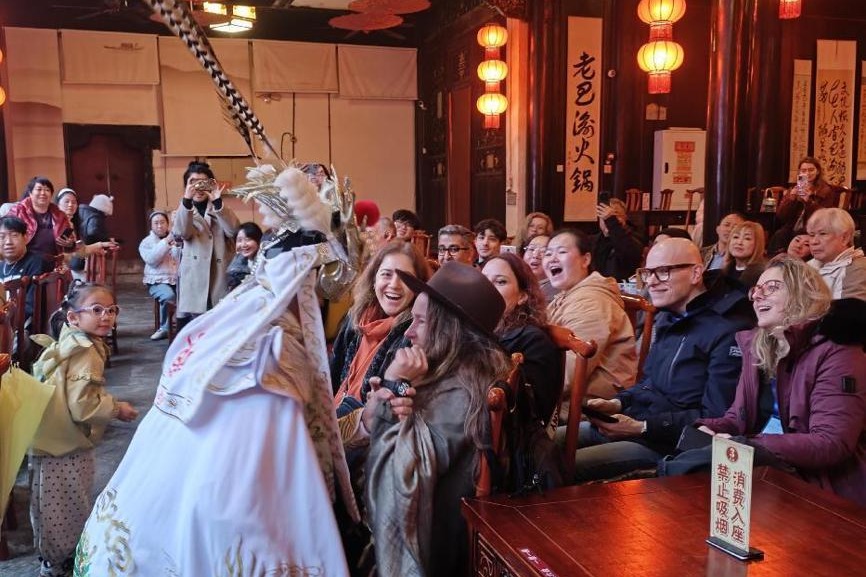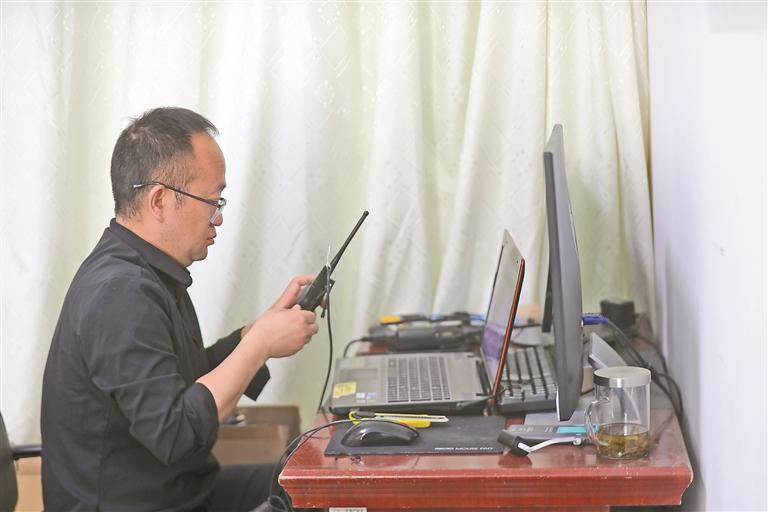Walking tall in a world of their own

Manifest destiny
He sees Sanhe's fading from the scene as manifest destiny — an inevitable part of Shenzhen's ambition to build new, gleaming residential and commercial districts to reflect its legendary rise. But, such unrestrained development should go with some care for migrant workers.
"In its heyday, the three-story offices of Sanhe Human Resources were a sea of people. But now, the buzzing scenes of recruiting people can only be seen on the ground floor," says Liu Yong, a dashen himself who has lived at Sanhe for a long time.
Fielding Chen Shiyuan, a Hong Kong-based Asia economist at Bloomberg Intelligence, believes that the ever widening wealth inequality is no excuse for Sanhe's voluntary choice of underemployment and even unemployment.
But the gap between the vast virtual world depicted by the internet and smartphones, and migrant workers' bleak and limited real-world choices stands as a real issue. Such an issue looms large as migrant workers are exposed to and overwhelmed by the glaring inequality — a time bomb that can find its roots in Shenzhen's meteoric rise, he says.
Some 35 years ago, Shenzhen was little more than a sleepy fishing village but, since 1979 when it was designated as the country's first special economic zone, the city has become the showpiece of the most rapid urbanization in human history across the Pearl River Delta.
"Though 'let some people get rich first' was the famous instruction for China's market reforms, it's hard to deny that our society is becoming worryingly unequal. One of the most extreme and often overlooked side products has been Sanhe," says Chen.
In Longhua today, it's barely possible to find a new housing development with apartments costing an average price of less than 60,000 yuan per square meter.
"Such a figure may sound unimaginable and meaningless for low-paid migrant workers," Fang points out. "It has become increasingly difficult for the second and third generations of unskilled and low-tech immigrants to find their place in Shenzhen, as the cosmopolis no longer makes its fortunes churning out cheap and labor-intensive clothes, electronics and toys for big foreign brands."
"Those deemed good for nothing and incapable of creating values and making contributions may end up being abandoned to their fate. That includes people wandering around at the Sanhe labor marketplace, discarded and forgotten by the rest of the world."
News of Sanhe's sagging fortunes has trickled in almost every other month this year.
"I've heard the labor marketplace is now on the wane. I've heard of the disappearance of urban villages in the central district of Shenzhen to make way for lucrative commercial and residential projects," says Xu. "I've also heard the days are numbered for the so-called 'low-end' immigrants like me in some cities."
But Shenzhen should be different, he insists.
Fang hopes that Shenzhen's craze for skyscrapers should never come at the expense of excluding migrant workers.
"A combination of urban villages, the labor marketplace and Sanhe dashens does reflect the other half of the world in Longhua and Shenzhen. At any time, we should not lose our awe and introspection for the city's dizzying economic growth and its hefty prices."
Contact the writer at sophia@chinadailyhk.com




































